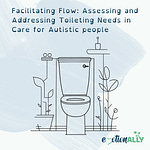This article used AI to support my writing. I’m tired and needed additional support to make my ideas clear to others.
Mirror Neurons are brain cells that doesn't just send a forward message when you perform an action, but also when you watch someone else doing something. These are mirror neurons. They are fascinating components of our brain’s architecture that researchers propose underpin our ability to understand the actions of others, learn through imitation and empathise.
The mirror neuron theory of autism proposed that differences in how these neurons function might contribute to some of the core social and communication challenges faced by Autistic folk. However, as research progressed, the picture became far more nuanced. Studies using fMRI and EEG yielded inconsistent results, with some showing reduced activity in mirror neuron-related brain regions in autistic individuals, while others found increased activity.
Vicarious trauma, or secondary traumatic stress, is a phenomenon often observed in individuals who are repeatedly exposed to the traumatic experiences of others, such as therapists, journalists, and first responders. It can lead to the development of trauma-like symptoms in the listener, stemming from empathic engagement with the survivor's narrative. The very act of "mirroring" the distress of another, of internally simulating their pain, is believed to be a key mechanism in this process.
Could it be that the potentially varied or less automatic "mirroring" of emotional distress in some autistic individuals leads to a different processing of vicarious trauma? This isn't to suggest a lack of empathy – autistic individuals can experience deep empathy, often expressed in unique ways. Instead, it proposes a different neural pathway for processing the trauma of others.
The immediate emotional mirroring that can overwhelm neurotypical individuals might be less pronounced. Processing the trauma might involve a greater emphasis on understanding the facts and the logical implications of the event, rather than immediate emotional resonance. Autistic individuals might employ different coping strategies based on their distinct sensory processing and emotional regulation styles. Conversely, for other Autistic individuals who do experience strong empathic responses, potential differences in their emotional regulation or sensory processing could make them particularly vulnerable to the overwhelming nature of traumatic narratives.
I suggest that understanding how Autistic individuals process empathy and vicarious trauma is crucial, especially considering their potential presence and contributions within roles like therapists, social workers, and support staff. Further research is needed to explore both the prevalence of autistic individuals in these professions and their unique experiences with vicarious trauma.














Share this post